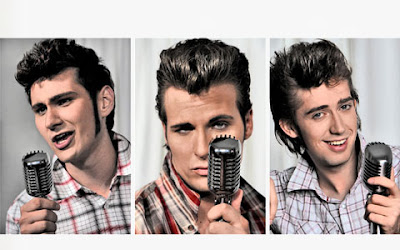Sweet dreams: From 1982 to today's house version.
Original: Eurythmics - Sweet Dreams 4:48
Recorded in 1982 and released in January 1983.
It’s the most famous song of the group Eurythmics, the music video for “sweet dreams” was filmed in January 1983, shortly before the single and the album were released. The video received heavy airplay on the MTV channel and is widely considered a classic clip from the early-MTV era. The lyrics are about the people in your live who want to profit from you in every place of the world. The message is to don't care about this people and to moving on.
Sylvie Vartan – Déprime 3:33
It’s a readaptation of the original song, the melody is exactly the same but the lyrics are completely different and they have no common with the original lyrics. This cover version was wrote in 1983. The lyrics of the french version are about a someone who is in a depression and who's medicament is the love of someone else.
Marilyn Manson cover: 4:39 min
The cover version from Marilyn Manson is the first single from the remix album, Smells like Children. Marilyn Manson added some extra lines to the lyrics that are not present in the Eurythmics version: "I wanna use you and abuse you/I wanna know what's inside you." and "I'm gonna use you and abuse you/I'm gonna know what's inside you".
The lyrics are quit the same than in the original version but they seem much harder because of the video and how the singer sings them.
It’s a much harder version than the original and the clip is very bizarre.
Recorded in 1994 and released in 1996.
The cover version from Marilyn Manson is the first single from the remix album, Smells like Children. Marilyn Manson added some extra lines to the lyrics that are not present in the Eurythmics version: "I wanna use you and abuse you/I wanna know what's inside you." and "I'm gonna use you and abuse you/I'm gonna know what's inside you".
The lyrics are quit the same than in the original version but they seem much harder because of the video and how the singer sings them.
It’s a much harder version than the original and the clip is very bizarre.
Recorded in 1994 and released in 1996.
Steve Angello Remix: 5:50
Recorded in 2005, the song is longer and haves more electric components and stronger bass.
Recorded in 2005, the song is longer and haves more electric components and stronger bass.
Benny Benassi remix: 3:29
The lyrics are the same and from the same singer but over the normal melody the DJ placed bass and electronic elements.
The lyrics are the same and from the same singer but over the normal melody the DJ placed bass and electronic elements.
I also found many other cover versions and remixes, but they are not so important for me because I want to show the evolution from the original song to the electro house version.
If you want to see the list of all the cover versions and remixes please visit: http://de.wikipedia.org/wiki/Sweet_Dreams_(Are_Made_of_This)_(Lied)
















